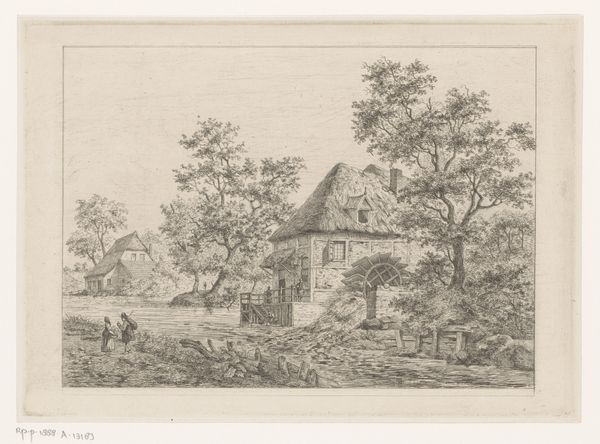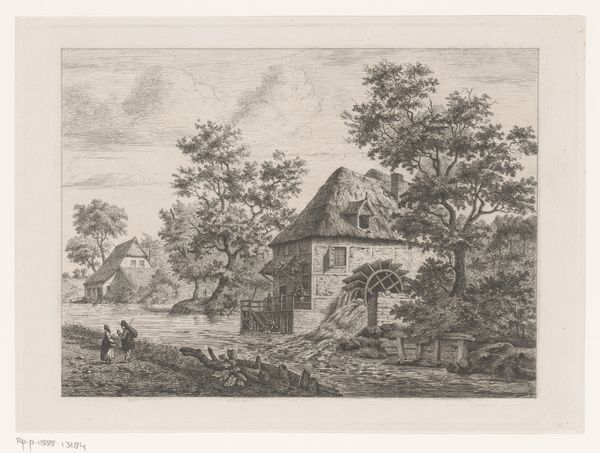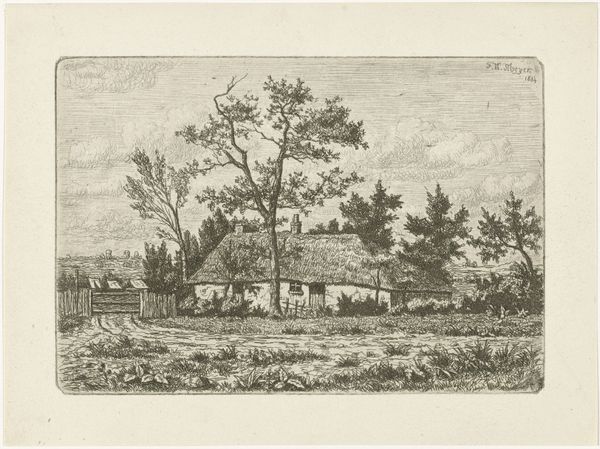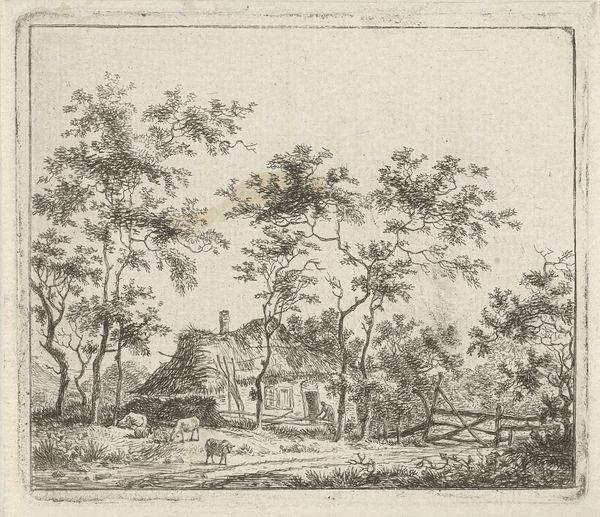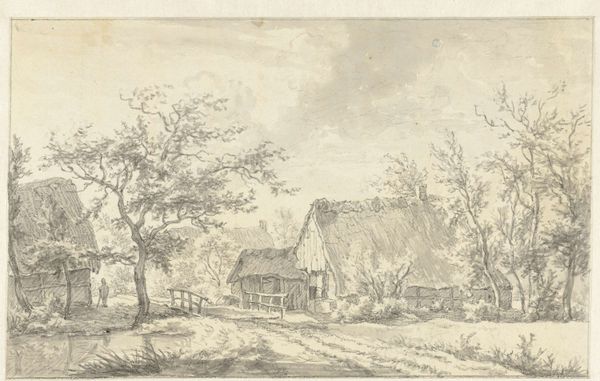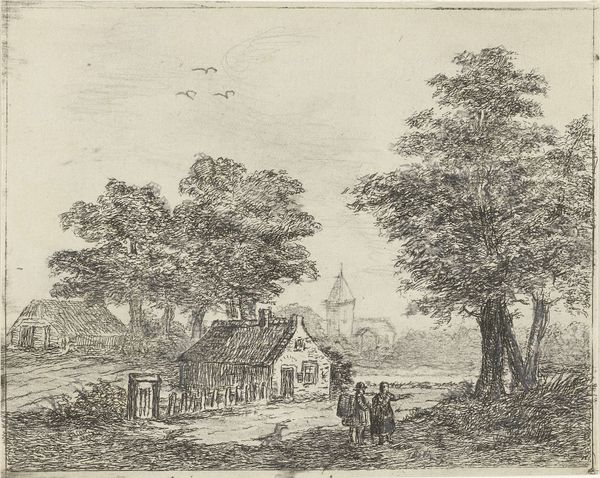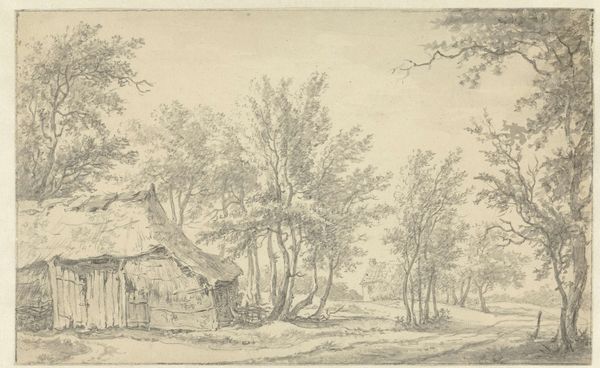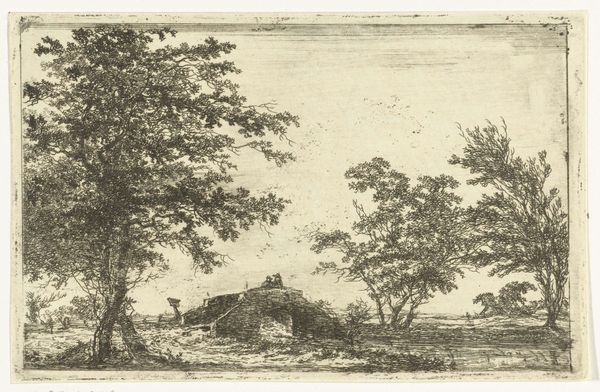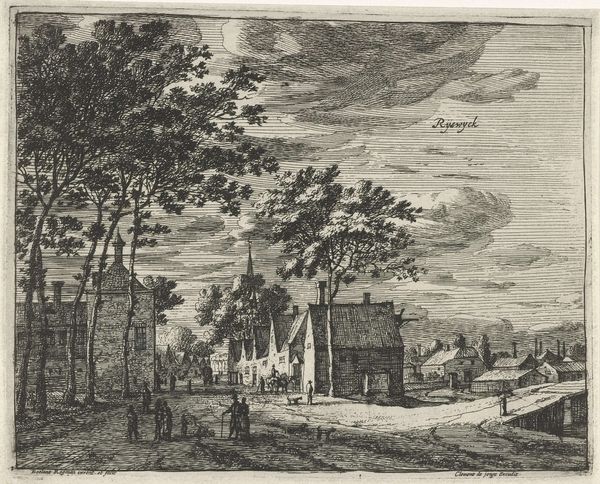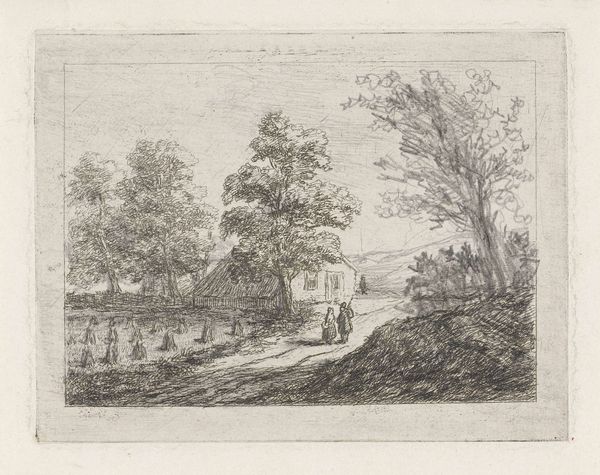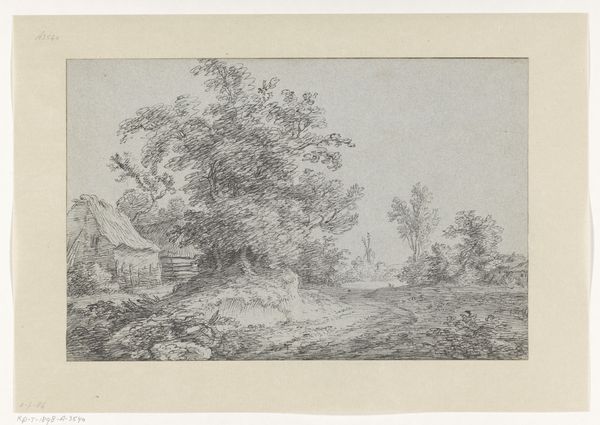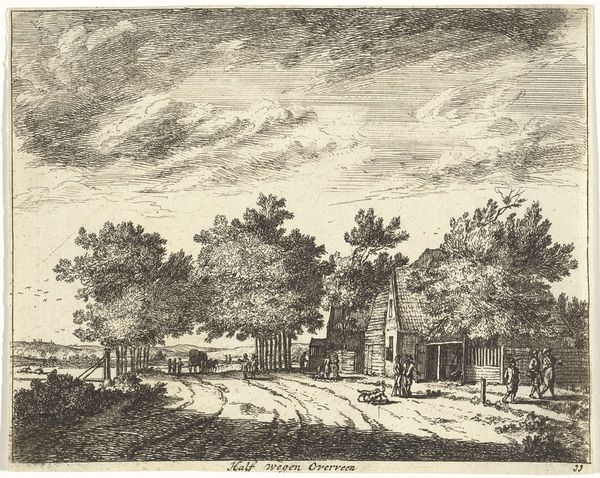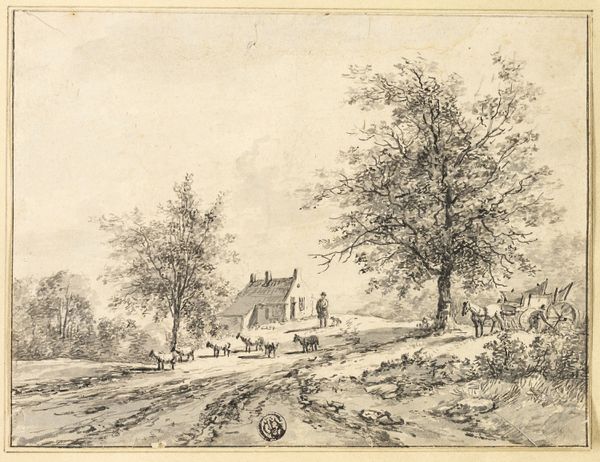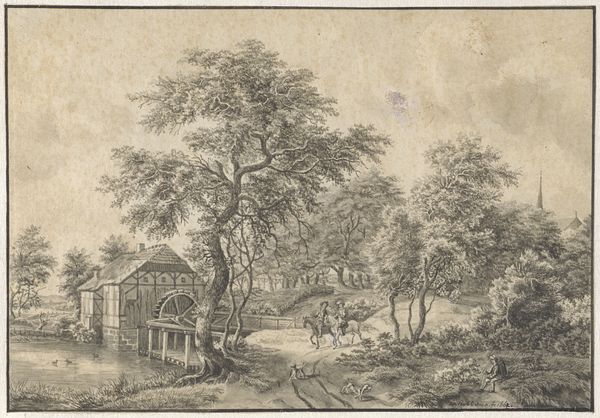
etching
#
dutch-golden-age
#
etching
#
landscape
#
etching
#
cityscape
#
realism
Dimensions: height 153 mm, width 226 mm
Copyright: Rijks Museum: Open Domain
Editor: This is Jean Théodore Joseph Linnig’s 1880 etching, “View of Delfshaven from the Water.” The scene feels quite serene, like a memory half-faded. How do you interpret this work? Curator: It’s a beautiful, muted image, isn't it? The artist captured not just a physical space, but a feeling, a cultural memory almost. Water, throughout history, is tied to purification and the subconscious, notice the way it reflects the scene; distorted but ever present. What strikes me most are the trees. They are framing a seemingly simple dwelling, a house with stories to tell and secrets to keep. It feels very much of its time, yes? Editor: Definitely. I can see the realism in the details. The way he uses etching to mimic textures in nature, on the water, and on the buildings… Curator: Precisely. The texture is crucial. Etching as a medium mimics memory in itself. It’s all about the play of light and shadow, revealing and concealing. Do you see that in Dutch Golden Age painting, where the light reveals not just physical forms, but a glimpse of spiritual truth? Editor: Oh, that’s fascinating. The way symbols echo across eras... And the Golden Age ties into cityscape too? Curator: Indeed! Cityscapes here are emblems of prosperity and stability. Yet the slight melancholy inherent to etchings suggests something else as well. Remember how symbols always hold more than one meaning? Even water. Do you know the meaning of the cloudy sky in Dutch paintings? Editor: A sort of sublime or divine presence hovering over ordinary life, maybe? This has definitely changed how I see the print, recognizing deeper symbolic connections rather than just surface-level depictions. Curator: Precisely! Visual literacy isn’t about what we see; it’s about understanding why and how we see.
Comments
No comments
Be the first to comment and join the conversation on the ultimate creative platform.
